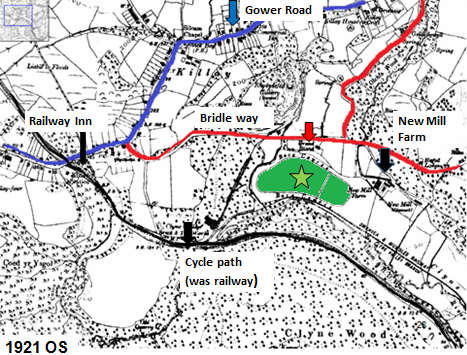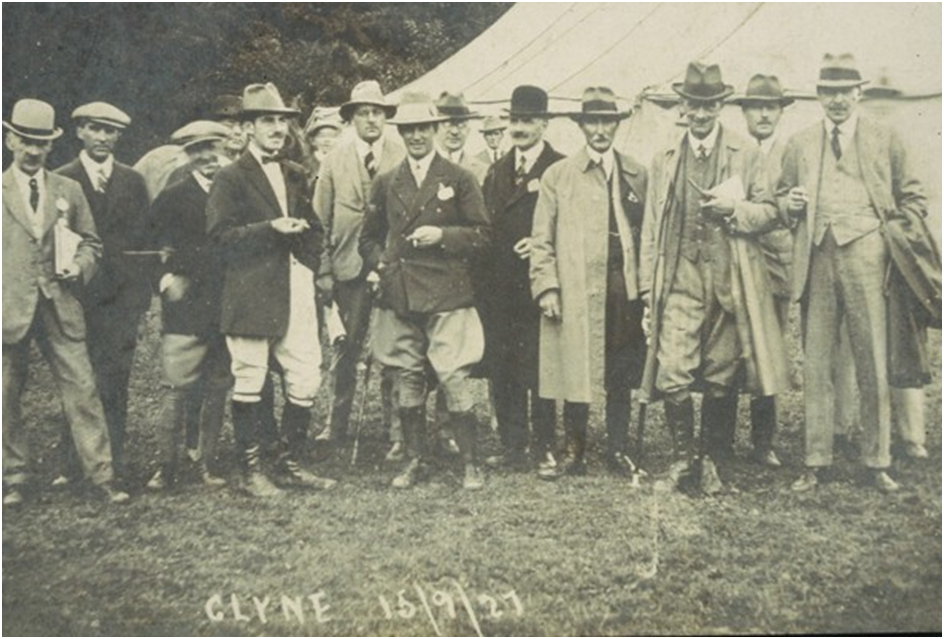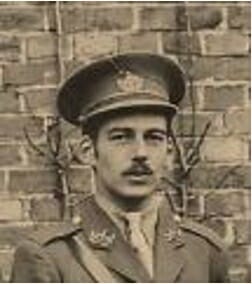Introduction
The history of the Morris family and their influence on Swansea and the Clyne Valley.
Family Tree
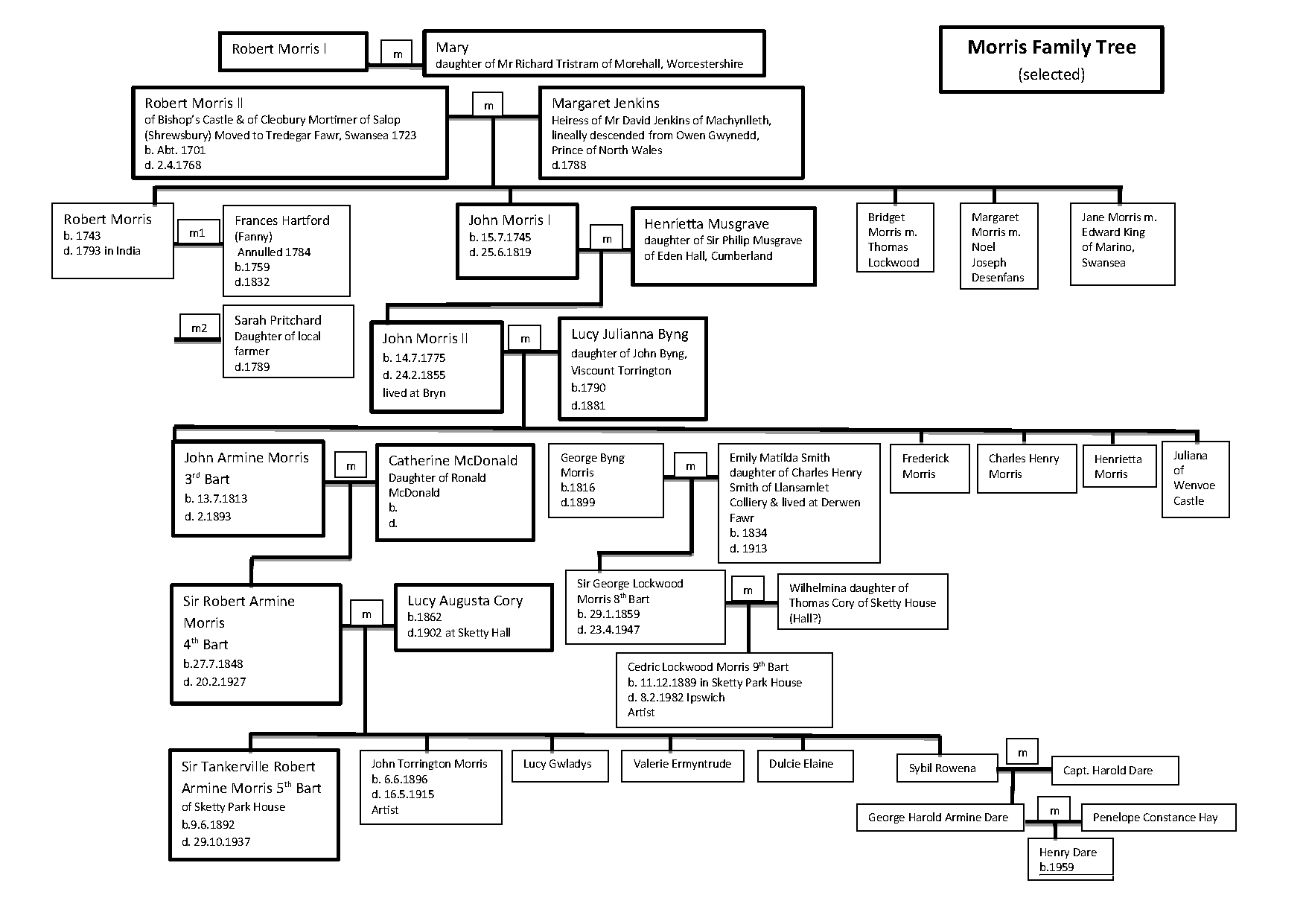
Robert Morris (c1701–1768)
Robert Morris (c1701–1768) came to Swansea from Bishop’s Castle near Shrewsbury, Shropshire to live in Tredegar Fawr near Llangyfelach with his wife Margaret in 1723. He came initially as manager of Dr Lane’s Llangyfelach copper works at Landore but following Lane’s bankruptcy in 1726, he assumed control of the works.
He was instrumental in making this copper smelting business profitable and in partnership with Robert Lockwood and others expanded the business in the Swansea valley. Their partnership built the Beaufort Bridge. In c1748 he built the Forest copper works. A successful businessman, Robert Morris also sought coal for his furnaces in the Swansea valley at Landore and Trewyddfa and in north Gower.
John Morris l (1745–1819) (Robert Morris’s second son)
- 1771. Commissioned the architect John Johnson to build the Morrises’ new residence, ‘Clas Mont’, also known as Clasemont, which looked down into the Swansea valley. He also bought land at Sketty.
- 1774. Married Henrietta, daughter of Sir Philip Musgrave of Cumberland. She was considered ‘to be one of the twelve most beautiful women on the land’.
- He constructed housing for his workers in the form of a large tenement block known as Morris Castle, completed in about 1773.
- He engaged the bridge-builder, William Edwards, to plan and construct a worker settlement named Morriston. The plan was laid out in 1779.
- 1798. He was thanked by the Trustees of Swansea Harbour for his considerable involvement in building Swansea’s West Pier.
- 1800. Retired from the partnership of Lockwood, Morris & Co.
- 1802. Nelson and the Hamiltons visited Swansea and accepted an invitation to dine at Clasemont.
- 1803. Appointed Sheriff of Glamorgan.
- 1806. Created a baronet for raising volunteer forces during the French wars.
- 1809. Portreeve (the equivalent of Mayor) of Swansea.
- 1810–1813. Responsible for laying out pleasure grounds in front of Cambrian Place.
- 1812. With Calvert Richard Jones of Veranda and John Llewelyn of Penllergaer became a Trustee of the Assembly Rooms in Cambrian Place.
- 1816. President of Morriston Savings Bank. (His son, John Morris II with Pascoe Grenfell, Thomas Lockwood, J H Vivian and others were Vice-Presidents.)
- 1818. Served on the Grand Jury.
John Morris ll (1775–1855)
- From 1800 John Morris ll increasingly ran the family business interests.
- 1803. Began mining at Landore basing operations at Cwm Pit.
- 1806. A Trevithick engine was installed to raise the coal, a job previously done by 12 horses.
- 1804. Was steward of the Swansea Races.
- 1809. Married Lucy Byng and lived at the Bryn.
- 1811. Elected Portreeve of Swansea.
- 1816. Took lease of Pentre Pit, Brynhyfryd.
- 1821–23. William Jernegan built Sketty Park mansion for Morris. Clasemont demolished.
- 1822. Appointed Sheriff of Glamorgan.
- 1823. Sketty Park Belvedere built, probably designed by Jernegan.
- 1826. Sold Tredegar to Lewis Weston Dillwyn.
- 1827. Elected Portreeve of Swansea for a second time.
- 1830. Opened a railway connecting the Pentre Colliery with the Swansea Canal.
The influences of the Morris family on Clyne Valley
Coal extraction — A short-lived attempt was made by John Morris ll to work coal in the Clyne Valley starting in 1812. In 1840 he transferred his interests in the coal to his second son, George Byng Morris who opened the Rhydydefaid Colliery at the head of the valley in the early 1840s and laid a tramroad to it in 1841.
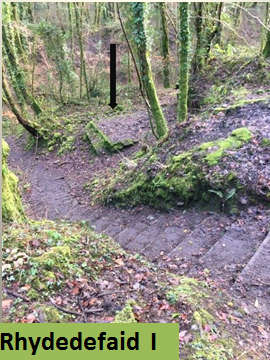
Railway — Both John Morris I and John Morris II were major subscribers to the Oystermouth Railway. In June 1804 an Act of Parliament was passed incorporating the Oystermouth Railway or Tramroad Company to make and maintain a line for the passage of wagons and other carriages. Passengers were carried on this line between 1807 and 1826/7 in horse-drawn coaches; thus it was the first passenger railway in the world.

In 1840 Sir John Morris ll transferred the undertaking to his son George Byng Morris. The section of the tramroad from Blackpill to the fishing lake (‘Ynys Gate’) was built by the Oystermouth Railway. The section from Ynys Gate to Rhydydefaid (the old pit) and on under the later railway embankment was built by George Byng Morris in or soon after 1841. It was not part of the Mumbles Railway even though it connected directly with it. This section remained in use until Rhydydefaid was abandoned in 1885 and then fell into disuse. The rails may have been lifted during World War 1. But the section from Blackpill to Ynys Gate was not affected and passed into the possession of the Swansea & Mumbles Railway with the rest of the Mumbles Railway. James Pridmore re-laid the section from Ynys Gate to his new Ynys Slant as a narrow-gauge tramway in 1920 but only used it for less than a year because Ynys slant was closed early in 1921. It remained in existence but not in use and was probably lifted during World War 2.
(More information in History section: Clyne Valley branch.)
Sketty Park House — Sketty Park House was a 2-storey, hipped-roof house with a main block and further ranges behind. It was designed by William Jernegan (Swansea) and built 1821–23 for the Morris family using some of the materials of Clasemont. The house was demolished c1975. Cedric Morris, the artist, was born in Sketty Park House.
Sir Tankerville Robert Armine Morris was the last of the Morris family to live in the house.
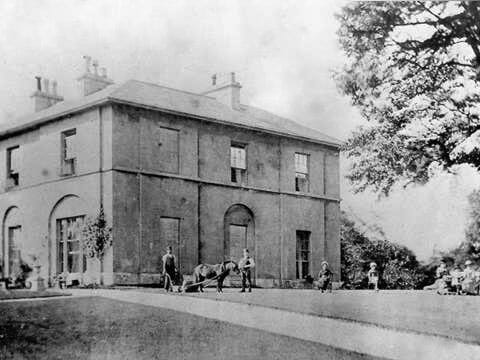
The Racecourse — supported by Sir Tankerville R A Morris. The map below indicates the site of the Racecourse. The red arrow points to the Grandstand.
(Link to the Racecourse Article)
